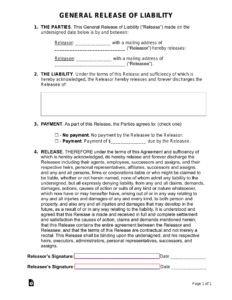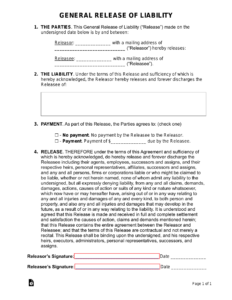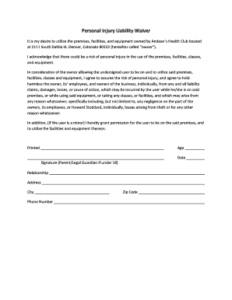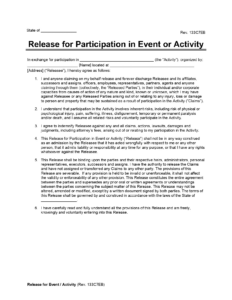Utilizing a readily available, no-cost version of this document allows for streamlined risk management, potentially saving significant time and resources compared to drafting one from scratch or hiring legal counsel. It provides a clear framework for outlining responsibilities and expectations, fostering transparency and understanding between parties involved in potentially hazardous activities. This readily available resource can be invaluable for small businesses, non-profit organizations, and individuals organizing events or activities.
Exploring the components, legal implications, and proper utilization of such documents is essential for anyone seeking to manage risk effectively. The following sections will delve into these crucial aspects, offering a comprehensive guide for both individuals and organizations.
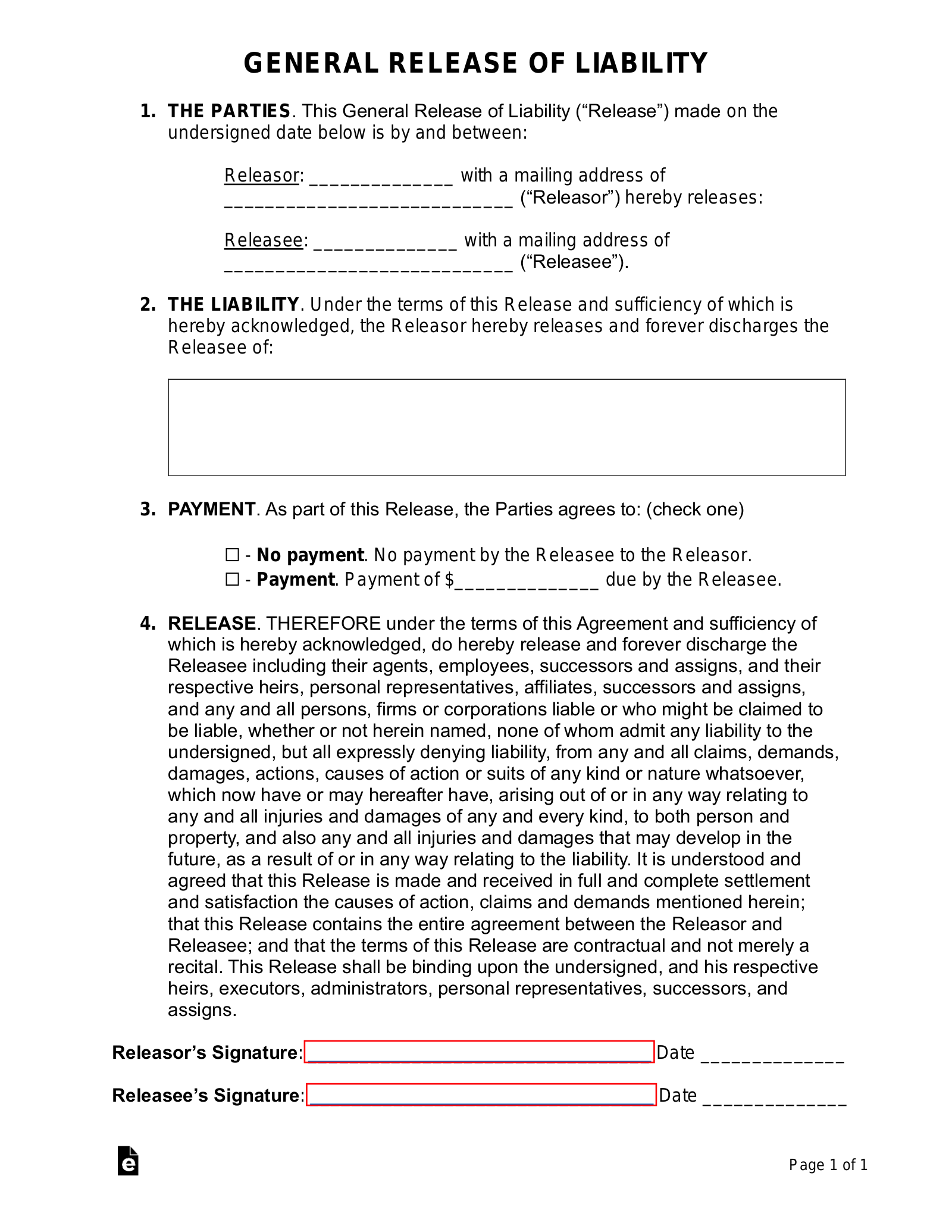
Key Components of a Liability Waiver
Effective liability waivers possess key elements ensuring clarity and legal enforceability. Understanding these components is crucial for both the party issuing the waiver and the individual signing it.
1. Identification of Parties: Clear identification of all involved parties is essential. This includes the full legal names and addresses of the individual releasing liability (the releasor) and the individual or organization being protected (the releasee).
2. Description of Activity: A specific and detailed description of the activity for which liability is being waived is necessary. General or vague descriptions can weaken the waiver’s enforceability.
3. Assumption of Risk: This section explicitly states that the releasor understands and accepts the inherent risks associated with the activity. It should clearly outline the potential dangers involved.
4. Release of Liability: This is the core of the waiver, stating that the releasor agrees not to hold the releasee responsible for any injuries or damages arising from participation in the activity, even if caused by negligence.
5. Indemnification Clause (Optional): This clause, while not always present, requires the releasor to compensate the releasee for any losses or expenses incurred as a result of the releasor’s actions during the activity.
6. Severability Clause: This clause ensures that if any part of the waiver is deemed invalid, the remaining provisions remain in effect.
7. Governing Law: The waiver should specify the jurisdiction whose laws will govern its interpretation and enforcement.
8. Signature and Date: The releasor’s signature and the date of signing are crucial for validity. Witness signatures can further strengthen enforceability.
Careful consideration of these components contributes to a legally sound and effective waiver, protecting all parties involved and facilitating clear communication of risks and responsibilities.
How to Create a Liability Waiver
Creating a robust liability waiver requires careful attention to detail and a clear understanding of legal principles. While readily available templates offer a convenient starting point, tailoring the document to specific circumstances is essential for maximum effectiveness.
1. Consult Legal Counsel: While templates provide a foundation, consulting with an attorney is recommended to ensure the waiver complies with applicable laws and adequately addresses specific needs and risks.
2. Identify Parties: Clearly state the full legal names and addresses of all parties involvedthe releasor (the individual waiving their rights) and the releasee (the individual or organization being protected).
3. Describe the Activity: Provide a precise and comprehensive description of the activity, outlining the inherent risks and potential hazards. Vague descriptions can weaken the waiver’s effectiveness.
4. State Assumption of Risk: Explicitly state that the releasor acknowledges, understands, and accepts the inherent risks associated with the activity. This demonstrates informed consent.
5. Draft the Release of Liability: This section should unequivocally state that the releasor agrees not to hold the releasee liable for any injuries or damages resulting from participation, even if caused by negligence (unless gross negligence or intentional misconduct are applicable under local law).
6. Consider an Indemnification Clause: This optional clause, if included, should clearly stipulate that the releasor agrees to compensate the releasee for any losses or expenses incurred due to the releasor’s actions.
7. Include Standard Clauses: Incorporate a severability clause and specify the governing law to ensure the waiver’s integrity and enforceability.
8. Signature and Date: Provide designated spaces for the releasor’s signature and the date of signing. Witness signatures, while not always required, can provide additional validation.
A well-drafted waiver forms a critical risk management tool, clarifying responsibilities and protecting parties involved in potentially hazardous activities. Thoroughness and precision in its creation contribute significantly to its legal validity and effectiveness.
Access to readily available, no-cost templates for waiving liability provides a valuable resource for managing risk. Understanding the key components, legal implications, and proper creation of these documents is crucial for their effectiveness. Careful consideration of the described elements, along with consultation with legal counsel when necessary, ensures these documents serve their intended purpose. A well-crafted document offering this protection clearly defines responsibilities and expectations, contributing to safer environments for various activities.
Utilizing these resources wisely empowers individuals and organizations to proactively mitigate potential liabilities. Continued education on legal best practices surrounding liability management remains essential for navigating the complexities of risk in various endeavors. This proactive approach fosters a culture of responsibility and promotes safer practices across diverse fields.
